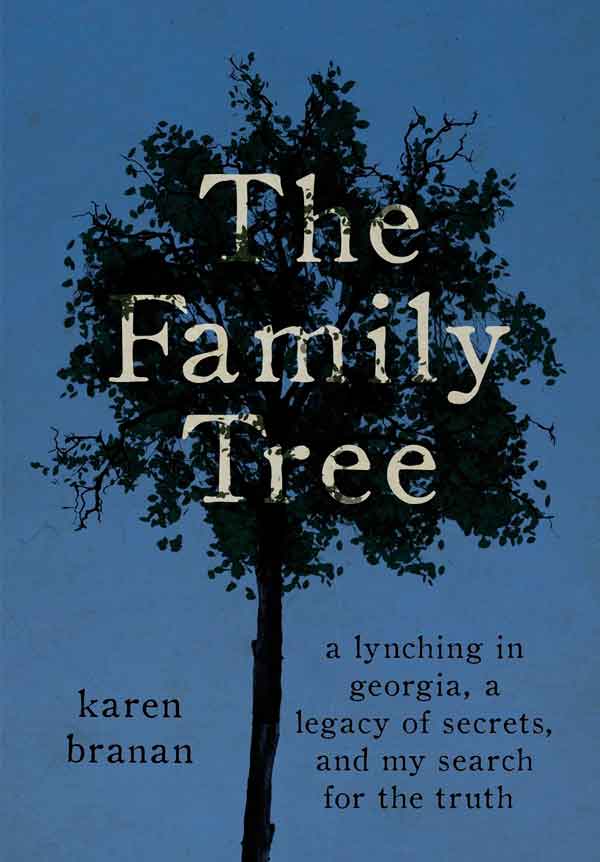“The Family Tree: A Lynching in Georgia, A Legacy of Secrets, and My Search for the Truth” by Karen Branan
c.2016, Atria
$26.00 / $34.00 Canada
304 pages
The skeletons in your closet don’t rattle around much anymore.
Most of your family has long forgotten the secrets those skeletons represented, while the ones who haven’t forgotten have made sure they’re not discussed. And it might stay that way forever unless, as in the new book “The Family Tree” by Karen Branan, there’s a journalist in the family.
As her 90-year-old, still-feisty grandmother lay dying, Karen Branan hoped to record some of her G’mamma’s recollections. Mostly, she got the usual things: schoolgirl hobbies, gentlemen callers… until G’mamma mentioned a hanging that she’d witnessed as a child.
Branan tucked the story away in her mind, along with other hushed, whispered things that tickled at her memories. Then, nearly 10 years after hearing that first hint from a dying woman who embellished her tales, Branan went in search of facts.
What she discovered was something she didn’t want to admit.
While there was always a certain amount of racism in Hamilton, Georgia, there was also evidence that blacks and whites mixed easily, especially in bedrooms and barrooms, and except when it befitted whites to use racism as a tool.
That seemed to be the case in early 1912.
Branan’s great-grandfather was town sheriff then, when his kin, a well-liked local white rapscallion, was shot dead on the front porch of a black woman’s home. Days later, the woman and three men went peacefully with the sheriff to jail; they had no reason to mistrust him because he didn’t arrest them. He took them in, he said, for their own safety and he seemed to have tried to protect them. But Branan discovered that the whole thing was contrived: in the end, the sheriff purposefully stepped away, shielding himself and leaving the prisoners unsafe. Around midnight on Jan. 23, 1912, a mob marched the four through town and hung them from a tree — and life in Hamilton went on as usual until an unexpected faction put a stop to what became an escalation of violence…
Reading “The Family Tree” is somewhat like looking for tomatoes in a field of weeds: you know there’s something worthwhile there, but you must possess patience to find it. You have to want to step over what you don’t need.
Sadly, what you probably don’t need comprises much of this book: author Karen Branan digs up names, names, and more names, which serve to lay the territory in her memoir, but which become just fluff to anybody who didn’t live in Harris County, Georgia. That, of course, is the reason for the title, but it’s overwhelming.
The worthiness here lies in what you’ll read otherwise: actions that are incomprehensible today but shockingly common a century ago, heroism, legendary bravery, and a journalist who freely admits that she didn’t even know what she didn’t know.
Now, for me, the latter outdid the former, but I was willing to wait for it to happen. You may not be; start “The Family Tree,” and you may become impatient. Or start it, and you may be rattled.
























